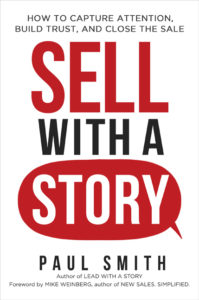The WRONG way:
“Well, that’s an interesting question, Bob. You see, it was a warm September morning, and the leaves on the trees outside our Dallas office were finally starting to change color. The smell of lilacs wafting through the lobby was almost strong enough to make us forget about the traffic noise from the highway out front. . .”
The problem with that opening, and why it sounds so blatantly contrived and lacking in authenticity, is that the details that it provides are probably irrelevant to the rest of the story. Does it really matter that it was warm that September morning instead of cold? Does it matter that it was in the morning instead of the afternoon? If so, by all means, put those details in. For example, if the story is about you testing your company’s newest line of winter coats by wearing one of them outside, then the fact that it was unexpectedly warm could be very important to the story. But if it’s not relevant, it just makes it sound like a high school creative writing exercise instead of a business story.
The RIGHT way:
“It was already 4 o’clock in the afternoon, and Jack hadn’t had any coffee since breakfast. He was a three-cup-a-day guy—9, noon, and 3. You could set your watch by him. But this meeting had been running late all day, the coffee machine was broken, and nobody had the time to make a run to Starbucks. It started to show by about 1 o’clock. You could hear Jack’s heel tapping on the hardwood floor in the conference room as his right leg was nervously bouncing up and down. You could see his eyes getting bloodshot and ears flushing red the more irritated he got. His voice was getting more and more shrill, and he’d been fidgeting in his chair since lunch . . . and then finally, he just snapped! . . .”
In this case, the story is obviously about someone who was about to suffer a mental breakdown. All the detail about his nervously tapping heel and bloodshot eyes and shrill voice give the listener some insight into how he felt and why (he hadn’t had two of his three daily cups of coffee). And it shows the buildup to his emotional breakdown. (But hopefully you can see that all that detail would have been a complete waste of time if instead of Jack snapping, the story had continued, “. . . and then Jack approved our recommendation and we all went home.”)
[You can find this and dozens of other examples and lessons on storytelling in sales in my book, Sell with a Story.]
—
 Paul Smith is one of the world’s leading experts on business storytelling. He’s a keynote speaker, storytelling coach, and bestselling author of the books Lead with a Story, Parenting with a Story, and Sell with a Story.
Paul Smith is one of the world’s leading experts on business storytelling. He’s a keynote speaker, storytelling coach, and bestselling author of the books Lead with a Story, Parenting with a Story, and Sell with a Story.


 Connect with him via email here.
Connect with him via email here.
Follow him on Facebook, LinkedIn, Twitter, and Instagram.
Sign up for his newsletter here to get one new story a week delivered to your inbox.
